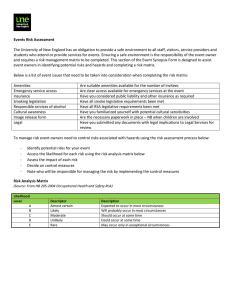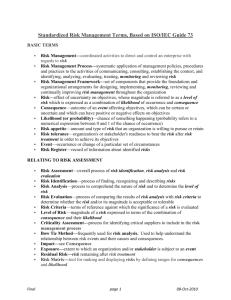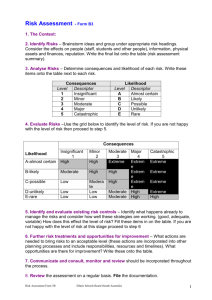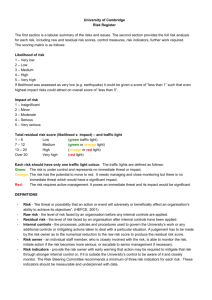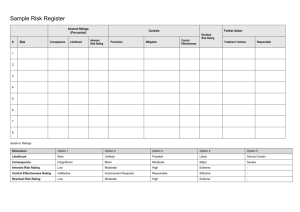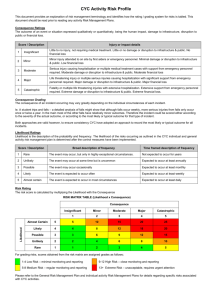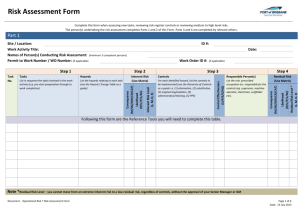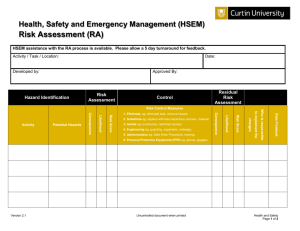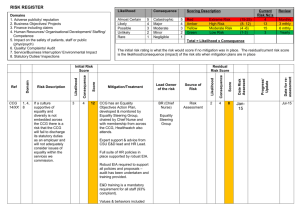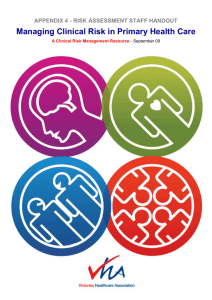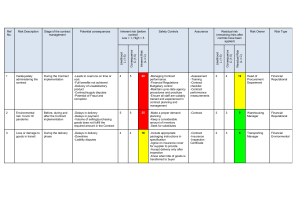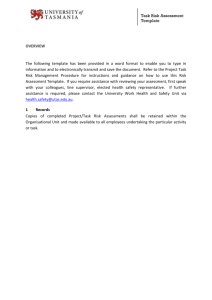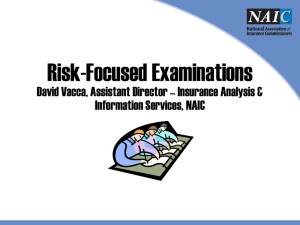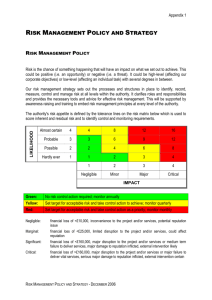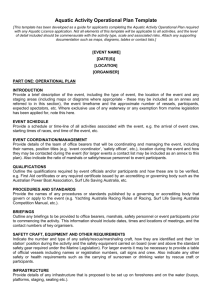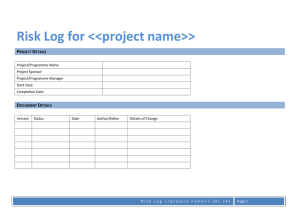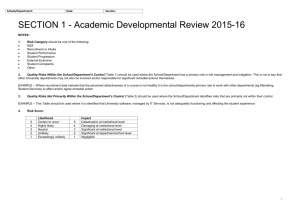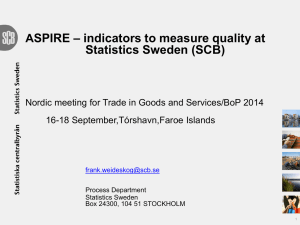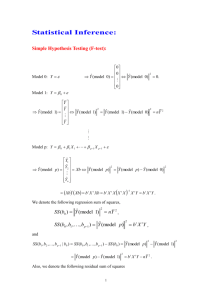Risk Assessment of Work
advertisement
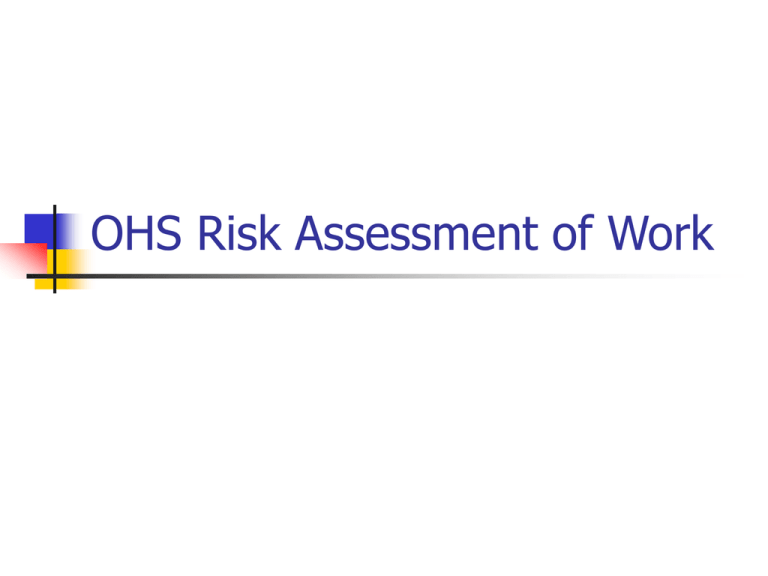
OHS Risk Assessment of Work Overall procedure Identify hazards Assess Inherent Risk (without controls) Using Consequence & Likelihood tables Determine Management Controls Assess Residual Risk (with controls) Monitor controls Procedure Step 1 Identify hazards, using checklist (enter on form) List of hazards Procedure Step 2 Determine Inherent Risk ie the risk that exists without any controls Determine consequence Determine likelihood Enter into IR table using the numerical values Consequence LEVEL DESCRIPTOR CONSEQUENCE – DESCRIPTION 1 Insignificant No injuries, low financial loss 2 Minor First aid treatment, on site release immediately contained 3 Moderate Medical treatment required, on site release contained with outside assistance, high financial loss 4 Major Extensive injuries, loss of production capability, off site release with no detrimental effects, major financial loss 5 Catastrophic Death, toxic release off site with detrimental effect, huge financial loss Likelihood DESCRIPTOR LIKELIHOOD – DESCRIPTION 1 Rare May occur only in exceptional circumstances 2 Unlikely Could occur at some time 3 Possible Might occur at some time 4 Likely Will probably occur in most circumstances 5 Almost Certain Is expected to occur in most circumstances LEVEL Risk Matrix LIKELIHOOD CONSEQUENCES Insignificant (1) Minor (2) Moderate (3) Major (4) Catastrophic (5) (5) Almost Certain M M H H H (4) Likely M M M H H (3) Possible L M M H H (2) Unlikely L L M M H (1) Rare L L M M H Legend H: High risk immediate action required M: Moderate risk; management responsibility must be specified (significant and moderate combined to be moderate) L: Low risk; manage by routine procedures Procedure Step 3 Enter Inherent Risk onto form Procedure Step 4 Determine the Residual Risk ie the risk that remains after implementing measures to reduce it: Procedure Step 5 Enter the existing (management) controls for each hazard onto form Determine if existing controls are very good, reasonable or poor Management Controls Rating Management control examples Very Controls are best practice, involve explicit standards Good and are followed all of the time. Includes a high emphasise on elimination, substitution or engineering controls. Reasonable Controls are in place but not followed all of the time and may not include best practice. Includes a high emphasis on administration and protective equipment. Poor There are few or no controls in place. No standards have been identified. Controls do not address Hierarchy of Control principles. Procedure Plot Inherent Risk against the assessed quality of the existing management control of the risk to determine the Residual Risk Risk Matrix for Residual Risk I N H E R E N T R I S K High Mod Low Very Good Reasonable MANAGEMENT CONTROL Poor Legend Residual risk is high - attend to immediately Residual risk is moderate - attend to in short term Residual risk is low - attend to in longer term Procedure Step 6 Take action where necessary! Use hierarchy of controls when determining any controls that need to be implemented: Hierarchy of Controls Elimination Substitution Isolation Engineering control Administrative control PPE (Personal Protective Equipment) Procedure Step 7 Monitor controls
